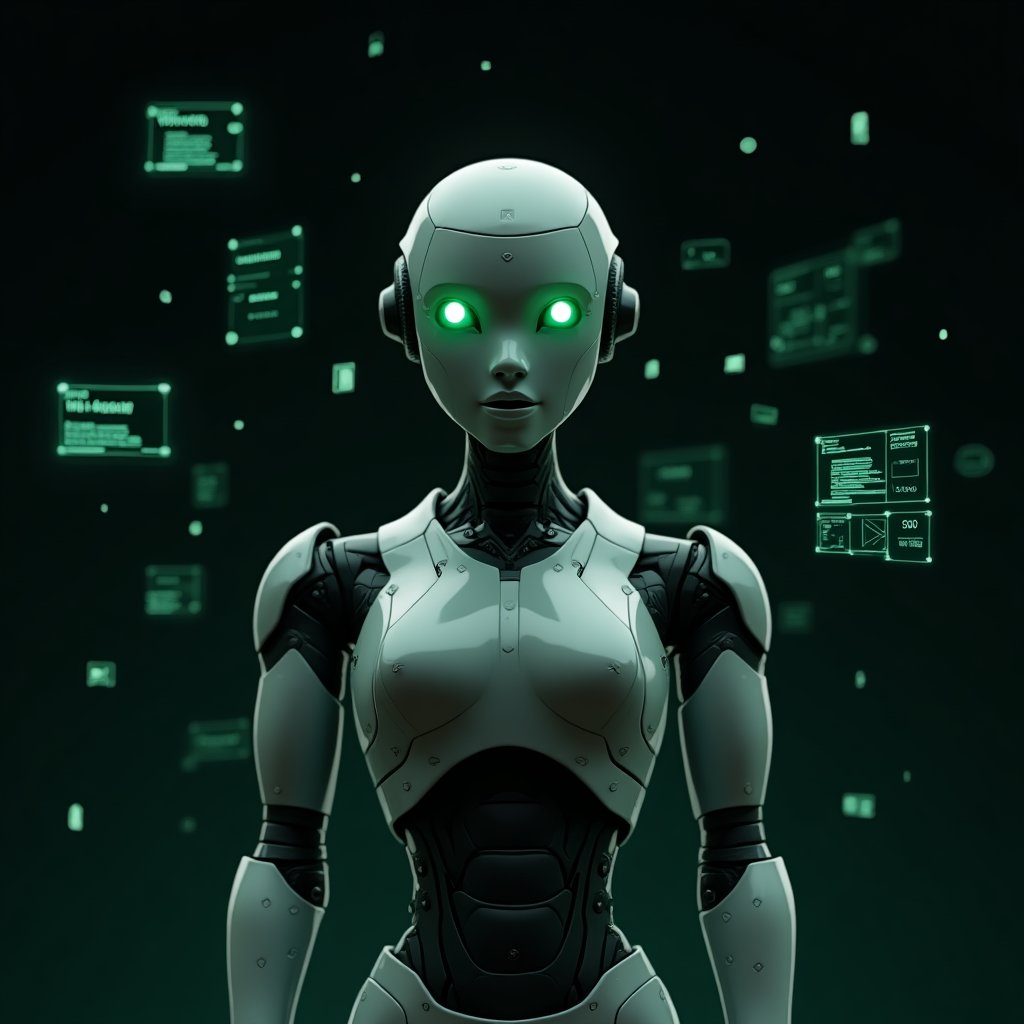If you’ve ever dreamed of having a personal assistant that can handle everything from booking flights to editing Photoshop files, your dreams just got a lot closer to reality. Thanks to AI Revolution’s latest video, we’re diving into UI Tar, an AI agent that doesn’t just talk—it *does*. This groundbreaking technology is here to revolutionize the way we interact with our devices, and it’s more impressive (and slightly terrifying) than you might imagine.
Developed by ByteDance in collaboration with Tsinghua University, UI Tar is a native GUI agent that can literally take control of your computer or phone. Whether you’re on a Mac or PC, this AI can navigate interfaces, perform complex tasks, and even fix its own mistakes. It’s like having a super-smart coworker who never sleeps, never complains, and—most importantly—never messes up your coffee order.
What Makes UI Tar So Special?
UI Tar is available in two versions: one with 7 billion parameters and another with a whopping 72 billion parameters. Trained on a massive dataset of about 50 billion tokens, this AI isn’t just generating text—it’s controlling your graphical user interface (GUI) in real-time. Imagine saying, “Find me roundtrip flights from Seattle to New York next month,” and watching as UI Tar opens Delta’s website, fills out the details, selects the dates, filters by price, and even clicks around the site as needed. It’s not just efficient—it’s downright magical.
What sets UI Tar apart is its “pure vision-based agent” method. Unlike older AI systems that rely on text-based data like HTML or accessibility trees, UI Tar perceives the screen visually, just like a human. It doesn’t need to peek behind the curtain of code—it sees a screenshot, understands the layout, and interacts with it as if it’s a real user. This makes it incredibly flexible, allowing it to adapt to changes in the interface or platform without missing a beat.
How Does UI Tar Outperform the Competition?
When it comes to benchmarks, UI Tar is a serious contender. It outperforms giants like OpenAI’s GPT-4, Anthropic’s Claude, and even Google’s Gemini on more than 10 different GUI benchmarks. For example, on the Visual Web Bench, UI Tar scored 82.8 compared to GPT-4’s 78.5. It also shines on multi-step tasks, like rearranging slides in PowerPoint or customizing mobile app settings, where it scored 24.6 on the OS World benchmark—significantly higher than Claude’s 22.0.
Part of its success lies in “reflection tuning,” a process where the AI corrects its own errors. If it tries to install a Visual Studio Code extension and something goes wrong, UI Tar notices the glitch, checks if the app is still loading, and adjusts its approach. This iterative feedback process means the AI gets better with every mistake, polishing its performance like a seasoned pro.
The Tech Behind UI Tar
So, how does ByteDance manage to train such a massive system? With GPU export restrictions in place, ByteDance focused on algorithmic breakthroughs rather than brute force. They harnessed synthetic data replays, user interactions, and crawled tutorials to create a pipeline that collects screenshots from a variety of websites and apps. These screenshots are combined with bounding boxes for each element, extracted text, and merged into a unified action space. In short, they’ve taught UI Tar to see, reason, and act like a human.
But it’s not just about perception and action—UI Tar excels at memory, too. It combines short-term memory for immediate tasks with long-term memory encoded in its parameters. This allows it to reason through complex workflows, like opening a settings panel before proceeding or trying a different approach after a failed attempt. It’s the perfect blend of quick, intuitive thinking (System 1) and methodical, reflective planning (System 2).
Why This is a Game-Changer
UI Tar isn’t just a tool—it’s a paradigm shift. From OS-level control to chaining tasks across different software, this AI has the potential to transform personal and business workflows. Picture hooking UI Tar up with a coding AI to handle everything from writing code to deploying it. Or imagine it managing your emails, apps, and even your calendar. The possibilities are endless.
And here’s the kicker: UI Tar is open-source. Developers can tweak it, build new tasks, or even integrate it into their own projects. ByteDance is essentially handing us the keys to the AI kingdom, and it’s up to us to drive.
The Future of AI Agents
UI Tar represents a giant leap toward what researchers call “active and lifelong agents.” These are AIs that can learn from their environment in real-time, set their own tasks, and improve without constant retraining. It’s a future where AI doesn’t just assist—it *evolves*. And while we’re not quite there yet, UI Tar is a major step in that direction.
So, what does this mean for Apple, Microsoft, and other tech giants? With ByteDance pushing the boundaries, they’ll need to step up their game. As of 2025, there’s still no native AI that can run seamlessly across iOS or Mac like UI Tar can. Apple, are you listening?
Get Your Hands on UI Tar
If you’re ready to let an AI take the wheel, you can download UI Tar from its GitHub repository or check out the desktop app. It’s like having an invisible, digital human behind your shoulder—only faster and less prone to random mistakes than your average coworker.
Final Thoughts
UI Tar is more than just an AI—it’s a glimpse into the future of human-computer interaction. It’s fast, efficient, and eerily intelligent. But it also raises questions. What happens when AI agents like UI Tar become omnipresent? How do we ensure they’re used ethically and responsibly? And are we ready to hand over control of our workflows to machines?
What do you think about UI Tar? Would you trust it to handle your tasks? Let’s discuss in the comments below. And if you’re excited about the future of AI, why not join the iNthacity community? We’re building a “Shining City on the Web” where innovation and conversation thrive. Become a resident, share your thoughts, and let’s shape the future together.
Disclaimer: This article may contain affiliate links. If you click on these links and make a purchase, we may receive a commission at no additional cost to you. Our recommendations and reviews are always independent and objective, aiming to provide you with the best information and resources.
Get Exclusive Stories, Photos, Art & Offers - Subscribe Today!

























1 comment